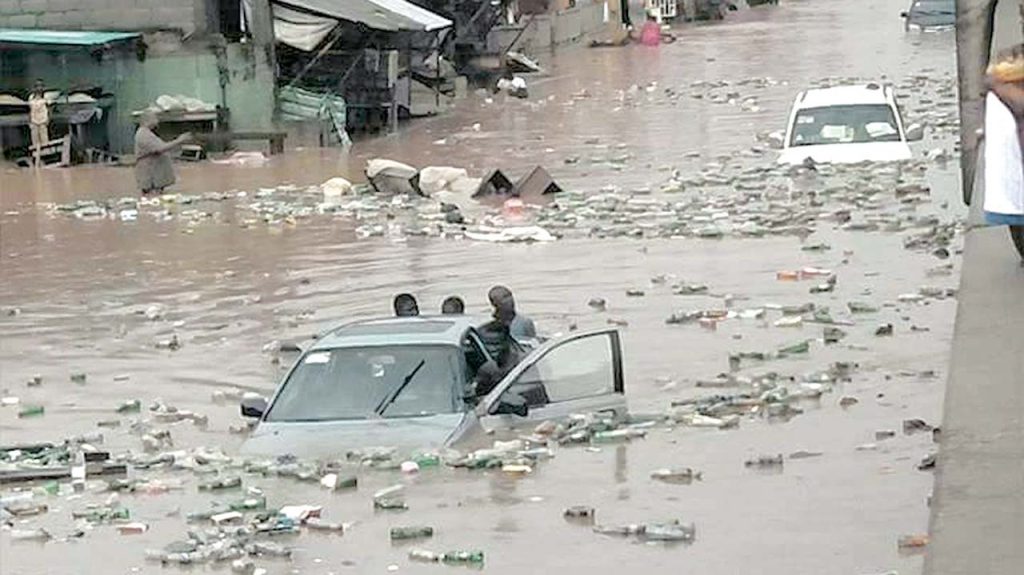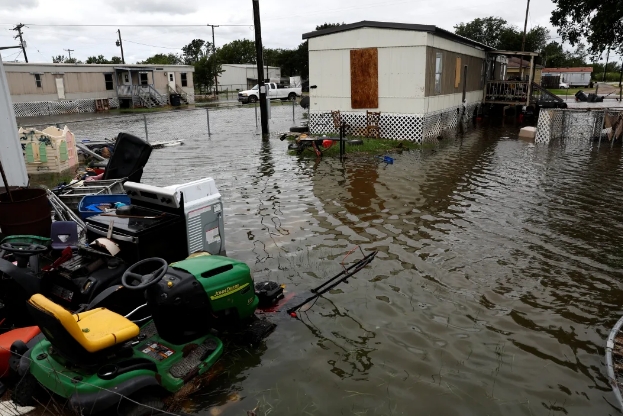
Heavy rains, Hurricane Beryl wreak flood in Nigeria, US
Sopuruchi Onwuka, with agency reports
Flooding and associated disasters have worsened in Nigerian cities and villages in the past one week as torrential rains become relentless and submerged 21 local government areas in 10 states in flood.

Meteorology researcher, Victor Nnamdi Dike, stated in an article in The Conversation Nigeria needs to build resilience to floods by addressing the problem of poor drainage, investing in a functional weather forecast system, and understanding the impact of climate change on rainfall extremes and water resources.
He stated that Nigeria is one of the most flood-prone countries in West Africa, adding that many areas experience annual flooding during heavy rainfall.

The Minister of Water Resources and Sanitation, Engr Joseph Utserv, stated that Nigerian stated recording different degrees of flooding as early as April. He made it clear that flood alert in many coastal parts of the nation remains very high.
In the United States of America, similar disaster trails the arrival of Hurricane Beryl in Texas where it dumped huge volumes of rain, leaving death and devastation in its tracks.
The 2024 Annual Flood Outlook (AFO) released by the Nigeria Hydrological Services Agency (NIHSA) listed some 148 local government areas in 31 with high flood risk. Some 249 local government areas fall within the moderate flood risk zones and 377 council areas fall within the low flood risk areas, the agency stated.

The minister pointed out that the incidents recorded in Nigeria so far are flash flood resulting from intense rainfall of long duration in areas of and poor drainage systems.
There is no official figure on the damage to property, amenities and infrastructure since the flood incidents befell Nigeria. No deaths have been recorded so far.
Elsewhere in the United States, Beryl hit storm tore through Texan cities, leaving devastation in major cities including Houston and forcing petroleum industry operations to take cautionary halt.
The US National Hurricane Centre (NHC) put the winds at 80 miles per hour or some 140 kilometres per hour.
The country’s National Weather Service had forewarned that Beryl would “bring very heavy rain, damaging hurricane-force winds and life-threatening storm surge to the Texas coast.”

Beryl has already travelled through the Caribbean as the earliest Category 5 storm ever recorded in the Atlantic, causing at least 11 deaths and widespread destruction. It then travelled across Mexico’s Yucatán Peninsula and the Gulf of Mexico.
Beryl is expected to weaken as it travels overland.
The storm caused major power outages in Texas Monday morning with nearly 2.7 million customers in the Houston region have been affected, according to a state-wide outage tracker. And with electricity outages came internet and telecommunication difficulties.
Local telecoms provider, Comcast, on Monday offered free hotspots in Houston area to facilitate emergency and rescue services.
According to reports monitored by The Oracle Today, Comcast offered free Wi-Fi hotspots in the region to help support residents as the NHC warned Texan residents to “use caution and remain vigilant during the cleanup phase,” even after Beryl leaves the area.
“Use Caution After the Storm as Deadly Hazards Remain Including Downed Powerlines and Carbon Monoxide Poisoning From Improper Generator Use,” NHC wrote in a post on X Monday.
The agency reported Monday afternoon that maximum sustained winds from Tropical Storm Beryl had decreased to about 60 mph, with higher wind gusts up to 58 mph near the entrance to Galveston Bay.
The NHC predicted in an update that Beryl would become a post-tropical cyclone on Tuesday.
Meteorologists warn that flash flooding and gusty winds are still happening across eastern Texas. A tropical storm warning and storm surge warning are also in effect for the Galveston area, including Galveston Bay, north of San Luis Pass to Sabine Pass, which is east of Houston.



